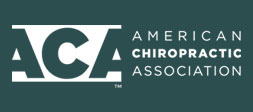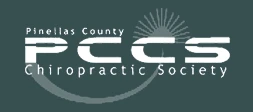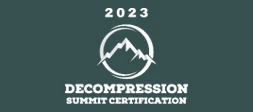Bulging / Herniated Disc
Discover Advanced Herniated Disc Treatments in St. Petersburg, Florida
Are you or a loved one struggling with the discomfort and pain caused by a herniated disc? At St. Petersburg Spine and Joint Center, we provide effective and non-invasive treatments for bulging and herniated discs. Our team understands the challenges and limitations that herniated discs can bring, and we’re here to offer hope and relief. Below, we’ll explore the causes, symptoms, and typical treatment options for this condition. And we will explore the innovative approach we offer to help you regain your quality of life.
Understanding Herniated Discs:
Causes and Consequences
Slipped, ruptured, bulging, or herniated discs are all terms used to describe the same condition that affects the spine. This occurs when part of the soft inner core pushes through a tear or weakness in the outer layer of the disc. This herniated disc can lead to nerve compression, causing pain and weakness in the arms or legs. In our clinic, we’ve successfully treated many patients with herniated discs, helping them find relief and regain their mobility.

Causes of Herniated Discs
Understanding what causes herniated discs is essential for effective treatment and prevention. Here are some primary factors contributing to this condition:
1. Degenerative Disc Disease:
As we age, our spinal discs gradually lose their integrity and cushioning properties. This age-related wear and tear is called degenerative disc disease, and it can make the discs more susceptible to herniation.
2. Injury or Trauma:
Sudden injuries to the spine, such as falls or car accidents, can force the disc’s inner core to protrude through the outer layer, resulting in a herniated disc.
3. Improper Lifting Technique:
Improper lifting techniques, especially when handling heavy objects, can cause excessive strain on the spine. This strain may lead to a herniated disc, especially if the lifting motion involves sudden movements or twisting.
4. Repeated Spinal Strain:
Jobs or activities that involve repetitive or strenuous movements, such as heavy lifting or bending, can increase the risk of herniated discs. These repetitive motions gradually wear down the discs, making them more prone to herniation.
Recognizing the Symptoms of Herniated Discs
Herniated discs cause many different symptoms, depending on the disc’s location and the effect on nearby nerves. Here are common symptoms associated with herniated discs:
1. Pain:
People who experience pain in the lower back, buttocks, thigh, and calf may have a herniated disc in the lumbar region. Herniated discs in the neck (cervical region) can also lead to pain in the shoulder and arm. This pain may get worse when coughing, sneezing, or with specific movements and is often described as sharp or burning.
2. Numbness or Tingling:
Herniated discs often cause numbness or tingling sensations in the area of the body served by the affected nerves. This numbness may radiate down the arm or leg.
3. Weakness:
The pinched nerves caused by a herniated disc can also cause weakness in the muscles those nerves are connected to, affecting balance and the ability to lift or hold objects.
It’s important to note that some people may have herniated discs without experiencing any symptoms. In such cases, the condition may only become evident through imaging tests like an MRI.
Traditional Treatment Methods for Herniated Discs
The treatment approach for herniated discs depends on symptom severity and the patient’s overall health. Conventional treatment options for herniated discs include:
1. Rest:
Resting and avoiding activities that exacerbate pain is often the initial recommendation. This allows the body to heal naturally, reducing inflammation.
2. Pain Medication:
Over-the-counter (OTC) painkillers may be recommended for mild to moderate pain. When OTC options are not effective, stronger pain medications are sometimes prescribed by doctors.
3. Physical Therapy:
Physical therapy is used to increase mobility and reduce pain through specific exercises designed to strengthen the spine and surrounding muscles.
4. Epidural Steroid Injections:
In some cases, healthcare professionals may suggest epidural steroid injections to reduce inflammation and provide temporary relief.
5. Surgery (Diskectomy):
Surgery is last-resort measure that is considered when non-invasive treatments fail to provide relief or when symptoms are severe and include:
- Poorly controlled pain.
- Persistent numbness or weakness.
- Difficulty standing or walking.
- Loss of bladder or bowel control.
In most surgical cases, only the protruding portion of the herniated disc is removed. In rare instances, the entire disc may need removal, and fusion of the adjacent vertebrae with a bone graft may be necessary.
During the fusion process, metal hardware may be implanted to stabilize the spine. Alternatively, in select cases, an artificial disc implantation may be recommended.
Advanced Alternative Approaches to Herniated Disc Treatment
While traditional treatments have their merits, we provide options to help patients avoid surgery or reduce their dependence on medication. At our clinic, we offer two promising alternative treatments that have shown remarkable results: Laser Spinal Decompression and Class IV Cold Laser Therapy.
Spinal Decompression:
Spinal decompression is a non-invasive treatment that relieves pressure on spinal discs by gently stretching and decompressing the spine without surgery. This stretching action creates negative pressure within the disc, promoting the retraction of the herniated or bulging portion. When combined with specific rehabilitation exercises and nutritional supplementation, spinal decompression has delivered an overall success rate of 91%, as seen in cases following the HillDT decompression protocol, as published in a study in March 2015.
MLS Robotic Laser Therapy:
MLS Robotic Laser Therapy is a non-invasive treatment that utilizes low-level laser energy to stimulate tissue repair and reduce inflammation. This therapy reduces pain and promotes healing by targeting the affected area of the spine. Unlike surgical procedures, cold laser therapy requires no incisions, anesthesia, or downtime.
The Advantages of Our Non-Surgical Herniated Disc Treatments
Non-Invasive: Both spinal decompression and cold laser therapy are non-invasive treatments, minimizing the risk of surgical complications.
Reduced Medication Dependency: These treatments can help patients reduce their reliance on pain medications, avoiding potential side effects and addiction risks.
Effective Pain Relief: Many studies have demonstrated the effectiveness of these alternative treatments in reducing pain and enhancing patients’ quality of life.
Natural Healing Promotion: Spinal decompression and cold laser therapy stimulate the body’s natural healing processes, facilitating the retraction of herniated disc material and tissue repair.
Minimal Downtime: Unlike surgery, which often requires a lengthy recovery period, our treatments involve minimal to no downtime, enabling patients to resume their daily activities sooner.
How to Get Started on the Road to Recovery
Consultation with Our Expert Team: Schedule a consultation with our experienced healthcare professionals to determine if you are a suitable candidate for these treatments. Our team will assess your symptoms, medical history, and overall health to provide personalized recommendations. Not all individuals with herniated discs are candidates for our treatments, so it is important to schedule a consultation with our team to assess your unique situation.








